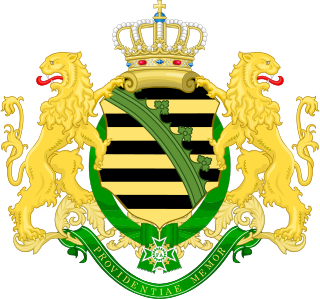
III Corps was an army corps of the British Army formed in both the First World War and the Second World War.

The Russian Imperial Guard, officially known as the Leib Guard were military units serving as personal guards of the Emperor of Russia. Peter the Great founded the first such units in 1683, to replace the politically motivated Streltsy. The Imperial Guard subsequently increased in size and diversity to become an elite corps of all branches within the Imperial Army rather than Household troops in direct attendance on the Tsar. Numerous links were however maintained with the Imperial family and the bulk of the regiments of the Imperial Guard were stationed in and around Saint Petersburg in peacetime. The Imperial Guard was disbanded in 1917 following the Russian Revolution.

This is the order of battle for both the Russian and German armies at the Battle of Tannenberg, August 17 to September 2, 1914.

The 11th Security Force Assistance Brigade is a brigade of the British Army which is intended to train and assist foreign forces. In 2021, under the Future Army changes, the brigade was redesignated, formerly being the 11th Infantry Brigade & HQ South East. Prior to the Army 2020 changes in 2013, the brigade was temporarily activated for deployment to Afghanistan. Originally formed in the Second Boer War, the brigade was engaged during both World Wars.
The following units of the German First Army and British Expeditionary Force fought in the Battle of Mons in World War I.
The 4th Guards Infantry Division was a unit of the Imperial German Army in World War I. The division was formed on May 18, 1915. It was part of a wave of new infantry divisions formed in the spring of 1915. The division was disbanded in 1919 during the demobilization of the German Army after World War I. It was a division of the Prussian Guards and hence recruited from all over the Kingdom of Prussia.
The Imperial Russian Army in June 1812 consisted of three main armies and other military formations. The Commander in Chief of the Army was Emperor Alexander I.

The Guards Cavalry Division (Garde-Kavallerie-Division) was a unit of the Prussian Army that was stationed in Berlin. The division was a part of the Guards Corps (Gardekorps).
The 2nd Division was a unit of the Prussian/German Army. It was formed in Danzig in March 1816 as a Troop Brigade (Truppen-Brigade). It became the 2nd Division on September 5, 1818. In 1890, the headquarters of the division was relocated to Königsberg, then the capital of East Prussia. In 1899, the headquarters was moved to Insterburg, further inland and closer to the border with the Russian Empire. From the latter's formation in 1820, the division was subordinated in peacetime to the I Army Corps. The 2nd Division was disbanded in 1919 during the demobilization of the German Army after World War I.
This is an order of battle of the French and German Armies at the beginning of the Franco-Prussian War in 1870.
The 3rd Guards Infantry Division was a unit of the German Army, in World War I. The division was formed on the mobilization of the German Army in August 1914 as part of the Guards Reserve Corps. The division was disbanded in 1919, during the demobilization of the German Army after World War I. It was a division of the Prussian Guards and was thus raised and recruited throughout the Kingdom of Prussia from the elite of recruits.

The Royal Saxon Army was the military force of the Electorate (1682–1807) and later the Kingdom of Saxony (1807–1918). A regular Saxon army was first established in 1682 and it continued to exist until the abolition of the German monarchies in 1918. With the formation of the Confederation of the Rhine by Napoleon the Royal Saxon Army joined the French "Grande Armée" along with 37 other German states.

The British Expeditionary Force order of battle 1914, as originally despatched to France in August and September 1914, at the beginning of World War I. The British Army prior to World War I traced its origins to the increasing demands of imperial expansion together with inefficiencies highlighted during the Crimean War, which led to the Cardwell and Childers Reforms of the late 19th century. These gave the British Army its modern shape, and defined its regimental system. The Haldane Reforms of 1907 formally created an Expeditionary force and the Territorial Force.

The Guards Division was an infantry division of the British Army that was formed in the Great War in France in 1915 from battalions of the Guards regiments from the Regular Army. The division served on the Western Front for the duration of the First World War. The division's insignia was the "All Seeing Eye".
The Battle of Monte Cassino order of battle for January 1944, is a listing of the significant formations involved in the fighting on the Winter Line January 1944, during the period generally known as the First Battle of Monte Cassino.

The 4th Cavalry Division was a unit of the German Army in World War I. The division was formed on the mobilization of the German Army in August 1914. The division was disbanded in 1919 during the demobilization of the German Army after World War I.







